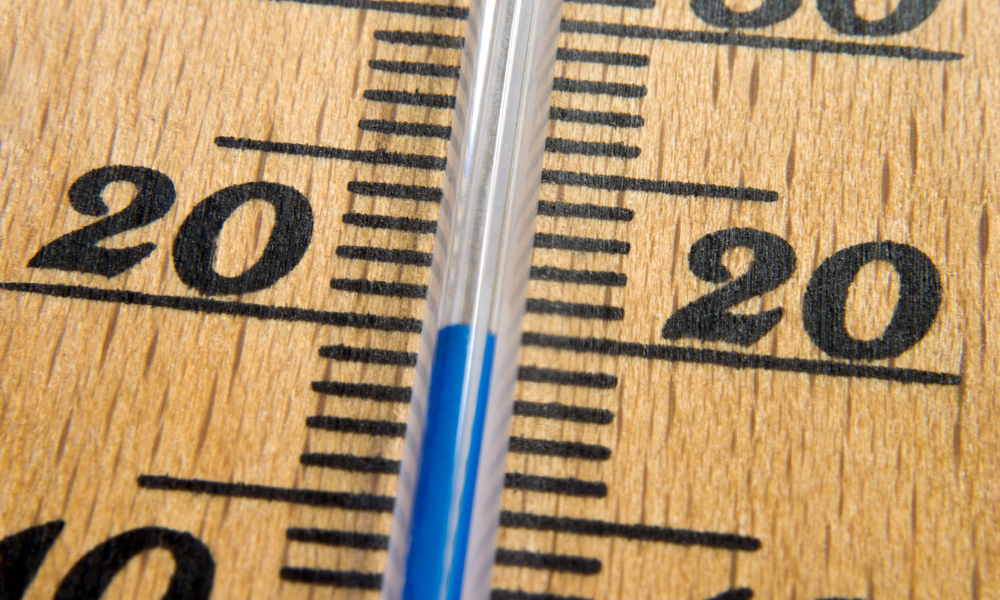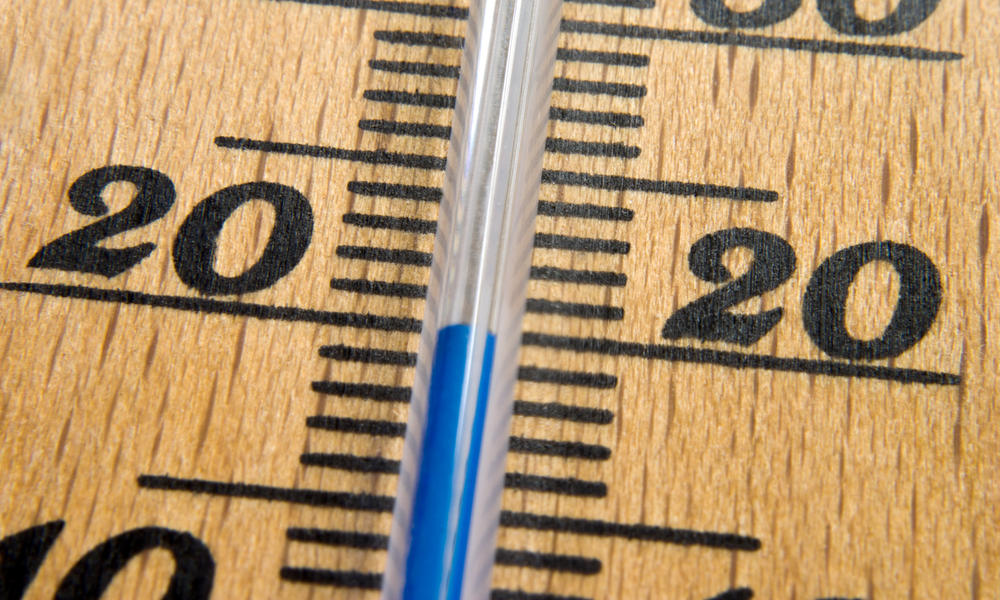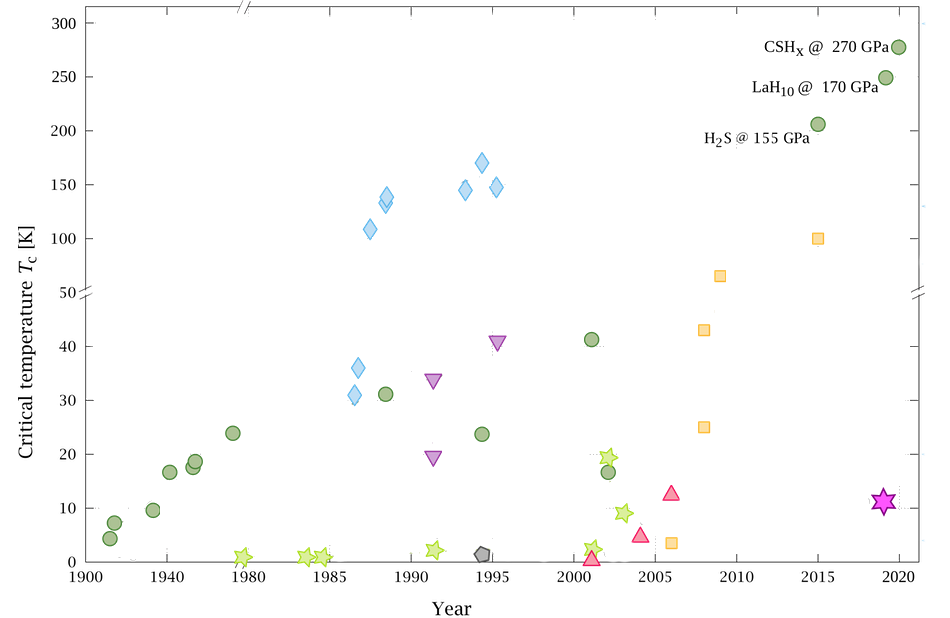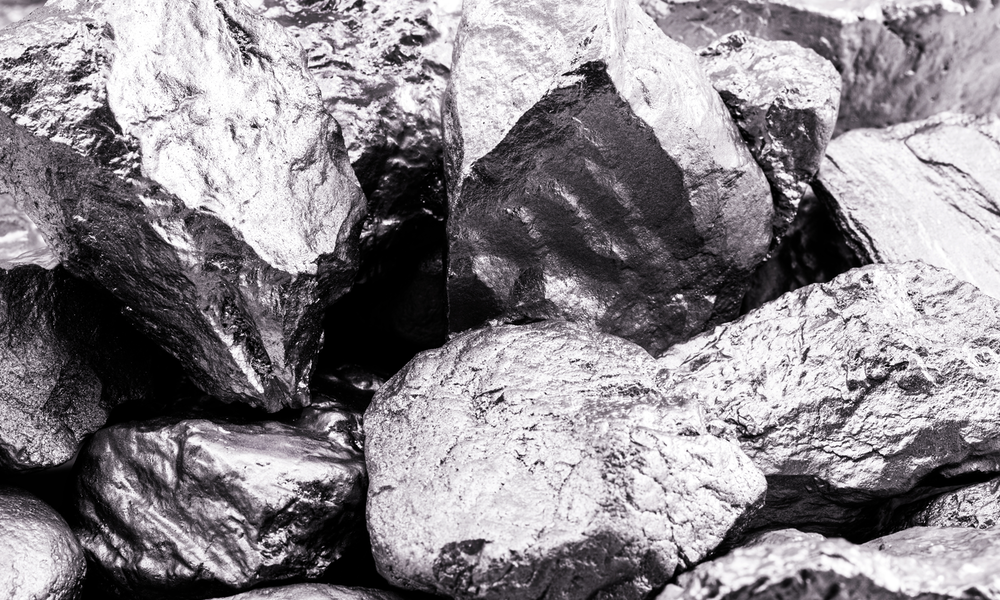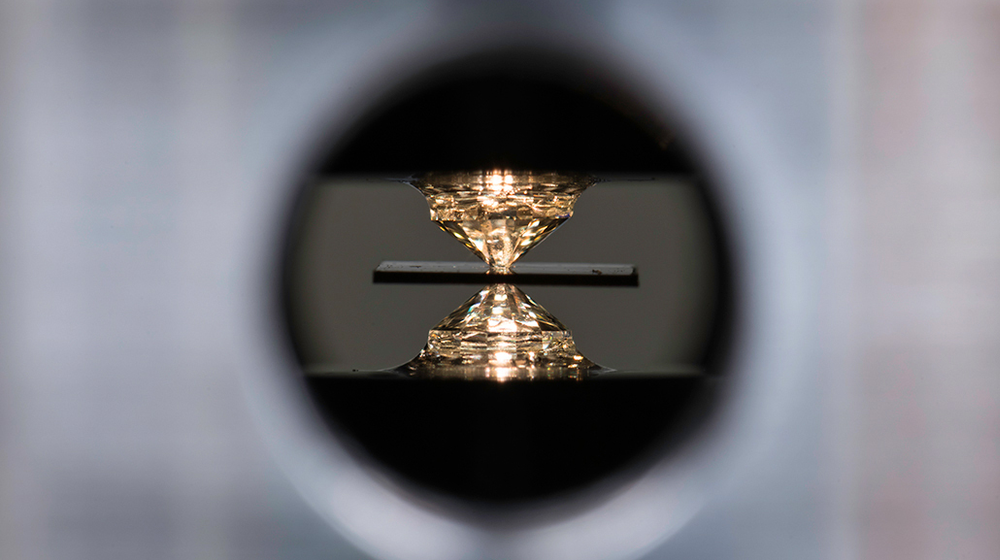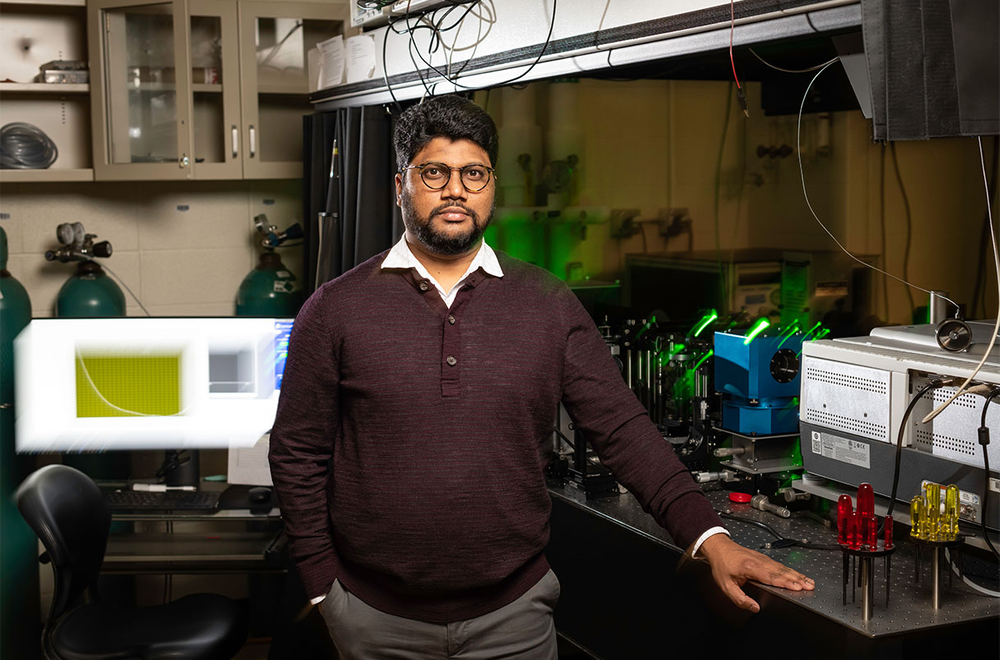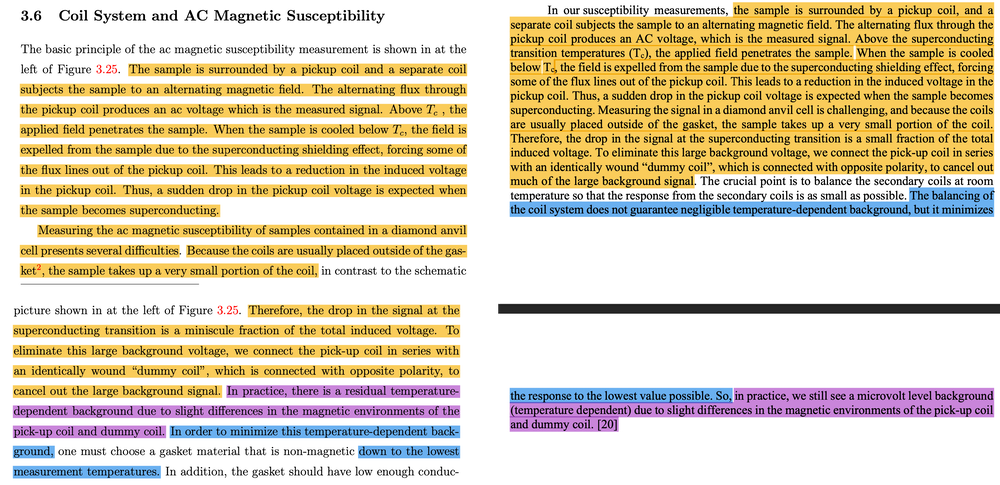Allegations of Scientific Misconduct Mount as Physicist Makes His Biggest Claim Yet
If Ranga Dias of the University of Rochester, New York, and his team have observed room-temperature (294 K), near-ambient pressure superconductivity [1], their discovery could rank among the greatest scientific advances of the 21st century (see Research News: Muted Response to New Claim of a Room-Temperature Superconductor). Such a breakthrough would mark a significant step toward a future where room-temperature superconductors transform the power grid, computer processors, and diagnostic tools in medicine.
But for the past three years, the Rochester team—and Dias in particular—has been shrouded in allegations of scientific misconduct after other researchers raised questions about their 2020 claim of room-temperature superconductivity [2]. In September, the Nature paper reporting that result was retracted, as documented in Science and For Better Science. Further misconduct allegations against Dias have recently emerged, with researchers alleging that Dias plagiarized substantial portions of someone else’s doctoral thesis when writing his own and that he misrepresented his thesis data in a 2021 paper in Physical Review Letters (PRL) [3]. Jessica Thomas, Executive Editor of the Physical Review journals, confirmed that PRL has launched an investigation into that accusation. “This is a pretty serious allegation,” she says. “We are not taking it lightly.”
To understand those allegations, Physics Magazine independently examined Dias’ thesis and spoke with more than a dozen experts in high-temperature superconductivity, including Dias. Although opinions differ, an overwhelming majority agree that some form of misconduct has likely occurred. Dias denies the accusations. “I really do see all this as a scientific debate,” he says. “So even though these are meaningless, baseless claims, I really do think that these are adding to advancing the science.” He insists that the data for both of his room-temperature-superconductivity claims are robust and valid.
The First Room-Temperature Superconductor?
A superconductor is a material whose electrons travel with zero resistance. The first known superconductors could only remain in a superconducting state up to about 25 K. In the late 1980s, researchers found the first so-called high-temperature superconductors, which superconducted up to 90 K—a temperature achievable with liquid nitrogen. Scientists thought they were on the cusp of a room-temperature-superconductor revolution. But, as of now, none of the high-temperature superconductors used in those early experiments (mostly copper oxides) has been shown to maintain its superconductivity above about 160 K, which is below the coldest temperature recorded in Antarctica.
There is another predicted path to high-temperature superconductivity. Models indicate that under enormous pressure, hydrogen can transform into a metal that can superconduct at hundreds of kelvins [4]. Several groups of researchers, including Dias and his postdoctoral advisor Isaac Silvera of Harvard University, claim to have made metallic hydrogen in the lab [5], but conclusive evidence for the existence of the state remains elusive. Researchers have had more luck creating metallic hydrogen alloys that solidify at lower pressures. In 2015, a team from Germany reported superconductivity in hydrogen sulfide (H3S) at 203 K and 155 GPa [6]. This demonstration was followed four years later by reports of superconducting lanthanum hydride (LaH10) at 250 K and 170 GPa [7]. The first room-temperature superconductor appeared to be within reach.
On October 14, 2020, Dias and his colleagues announced in the journal Nature that they had discovered superconductivity in carbonaceous sulfur hydride (CSH), a hydrogen-containing material, at 287 K and 267 GPa—the first room-temperature superconductor [2]. The cover of Nature playfully described the results as “turning up the heat,” and initial reactions from other scientists were largely positive. “I called Dias and congratulated him,” says Mikhail Eremets of the Max Planck Institute for Chemistry, Germany, who led the team that reported the 2015 H3S result.
But not everyone was impressed. Among the unimpressed was Jorge Hirsch, a condensed-matter theorist at the University of California, San Diego, and a self-identified skeptic of high-temperature superconductivity in hydrogen-rich compounds. When the CSH result was published, Hirsch immediately checked the paper for flaws and soon focused on measurements of magnetic susceptibility, a property that describes the effect of a magnetic field on a material. Like electrical resistance, magnetic susceptibility should drop sharply when the material enters the superconducting state—a key test for superconductivity. Then it should flatten or very slowly rise as the temperature lowers further. To Hirsch, the shape of one of the magnetic susceptibility plots in the Nature paper (specifically, the inset image of “Extended Data Figure 7d”) seemed strange, because the slope at lower temperatures exhibited a sharp jump up. This puzzling piece of data was the first question that led to many more.
Data Manipulation in Europium
The search to understand the 2020 CSH data led Hirsch to inspect a 2009 result published in PRL that reported superconductivity in europium [8]. Because europium and CSH behave very differently (europium superconducts only up to 2.75 K), Hirsch was surprised to find that the two materials seemed to have similarly shaped magnetic susceptibility plots. Looking at the author contributions of both papers, Hirsch noted that both sets of magnetic susceptibility measurements were made by the same person, Matthew Debessai, who worked at Intel Corporation as of 2021. (Intel did not respond to a request for information about Debessai’s current status with the company.) “[The data] looked superficially similar…but it wasn’t like they were duplicates,” says James Hamlin, a high-pressure experimentalist at the University of Florida, and an author of the europium paper.
Struck by these commonalities, in November of 2020, Hirsch emailed Debessai, requesting the data. Debessai did not cooperate, so Hirsch contacted the paper’s other authors to get the information he wanted. Another coauthor found it on an old computer and handed it over in July 2021. “I cracked open the data thinking, ‘Alright, I'm going to prove to Jorge that there’s nothing wrong with this data,’” Hamlin says. He says that instead, he found “one issue after another,” including a section of the magnetic susceptibility data that appeared to have been copied and pasted from one temperature range to another. PRL was alerted, and the europium paper was retracted on December 23, 2021. A repeat of the europium experiment by another of Hamlin’s coauthors found no superconductivity.
When Hamlin uncovered the europium data issues, he set up a meeting with Dias and Ashkan Salamat, a physicist at the University of Nevada, Las Vegas, and an author of the CSH paper. “I said, ‘Look, there are problems with the europium data. The data has been manipulated, and you need to look at your CSH susceptibility data,’” Hamlin recalls. But, according to Hamlin, Dias and Salamat seemed unconcerned about the possible misconduct. They seemed more worried that the news of the europium data fabrication would go viral, he says.
Failure to Replicate CSH
While Hirsch looked into the published CSH data, others tried to replicate the CSH results. The description in the paper of how to synthesize CSH was “scarce but still sufficient,” says Alexander Goncharov, a materials scientist at the Carnegie Institute in Washington, DC. He thought the replication would be doable. Goncharov and his team synthesized CSH but only through a modified procedure that used a different material in one of the steps (methane was substituted for pure carbon) [9]. Eremets, too, attempted to reproduce Dias’ results, but after six months of work, he says he gave up. To date, no unaffiliated experiment has corroborated Dias’ synthesis, let alone observed superconductivity in CSH.
Both Eremets and Goncharov contacted Dias for guidance in synthesizing CSH, but they say that they were given no help. Eremets says that he is used to more cooperation in these matters. When he announced his discovery of superconductivity in H3S, he gave Paul Chu, a high-temperature superconductivity expert at the University of Houston, immediate access to his lab in response to Chu’s request.
“It’s a tricky synthetic procedure, and it often doesn’t work,” says Russell Hemley, a condensed-matter physicist at the University of Illinois Chicago. Hemley collaborated with Dias on a recent CSH experiment [10]. “You have to get the initial pressures just right and use the right laser power and so on,” he says. “The fact that Eremets and Goncharov haven’t been successful doesn’t tell me very much, except that it’s tricky.”
Theorists have also had difficulty modeling the CSH results. In the past two and a half years, despite rigorous theoretical searches, nobody has found a single structure that contains carbon, sulfur, and hydrogen, and that superconducts at the same temperature as CSH, says Lilia Boeri, a condensed-matter theorist at the University of Rome [11]. By comparison, other hydrides have been easily simulated and their superconducting transition temperatures calculated to within 5% of their experimental values. Room-temperature superconducting CSH “should not exist,” Boeri says. Hemley argues that a simplified calculation called a virtual crystal approximation can account for CSH’s properties [12]. Boeri, however, says that the approximation applies only when the compound contains elements that are neighbors in the periodic table, which carbon and sulfur are not.
Back to the Data
For over a year, Dias refused to provide the CSH data files. He claimed that pending patents prevented him from sharing them. “I thought that excuse was baloney,” Hamlin says. “It’s just voltage versus temperature data.” Then on December 25, 2021—two days after the europium paper was retracted—Dias and Salamat changed their minds and published the complete dataset for the magnetic susceptibility measurements [13]. Hirsch began working on the data with Dirk van der Marel, a condensed-matter physicist at the University of Geneva. They quickly spotted something odd.
To obtain the CSH magnetic susceptibility data—a piece of critical evidence for superconductivity—Dias and his colleagues wrote in the Nature paper that they made two independent voltage measurements: the “raw” signal from the superconducting CSH sample and a background signal from a nonsuperconducting CSH sample. They then subtracted the background from the raw signal to get the “clean” signal.
When a signal is measured, it contains some noise in the form of random fluctuations in the data. Independently measured signals will have independent noise and subtracting one such signal from another should lead to a clean signal with at least that much noise, the opposite of what Dias and his colleagues presented. Hirsch and van der Marel concluded that the data were manipulated [14]. In response, Dias and Salamat said that they hadn’t measured the background signal, as they had claimed in the Nature paper. Rather they had “constructed” it. Hirsch and van der Marel’s argument about lower noise fell flat. The two were stuck until a Reddit comment gave van der Marel an idea that works even if the background is constructed.
The trick is to understand relationships between the noise in different signals. To explain, van der Marel analogizes the CSH dataset to a family. In a typical family, the mother and father are not genetically related to each other, but both parents are genetically related to their child. Similarly, the noise of the background (the father) and of the raw signal (the mother) should be correlated only with the clean signal (the child) and not with each other. But for the released CSH data, that isn’t the case. The noise of the background and raw signals are correlated, as are the noise of the raw signal and the final, clean one. There is no correlation between the noise of the final signal and the background. In family terms, the mother is genetically related to the father, but the father is not related to the child. This “peculiar” relationship indicates that the clean signal was not obtained the way Dias and colleagues claim, van der Marel says.
On September 26, 2022, the CSH paper was retracted. “It was a nonstandard method, and we hadn’t disclosed it. So that was the reason to retract,” Dias says. “[Nature] hasn’t questioned the validity of our data…the data is valid.” But a “nonstandard method” does not explain the data relationships, Hamlin says. “On the other hand, it’s very easy to understand how you could go the other direction, how you could take the published data and add something to it to get to the raw data.” Additionally, in an analysis published after the retraction, Hamlin also found issues in the electrical resistivity data. He found that some of the data points are separated by discrete steps, while others by smooth slopes. While digitization creates discrete steps, it does not create smooth curves between them [15].
Asked if Hamlin would see a similar pattern in the electrical resistivity data of other hydride superconductors, Dias answered affirmatively. But the step-like patterns have not been seen in the measurements of other such materials, and unlike magnetic susceptibility data, the electrical resistivity measurements have no background that could introduce them.
The University of Rochester has conducted two internal inquiries into the CSH data-manipulation allegations. According to a spokesperson, both inquiries “determined that there was no evidence that supported the concerns.” But the university has not made the remit of the investigations public and has not provided any rationale for the investigations or details on how they reached their conclusions.
Allegations of Plagiarism
While Hamlin was digging into the CSH data, he came across familiar-looking sentences in the paper that presented the raw CSH data—lines that he recollected writing in his 2007 PhD thesis. On a hunch, he pulled up Dias’ 2013 thesis and fed both his thesis and Dias’ into a plagiarism checker. His computer screen lit up; the two documents contained numerous identical passages. Physics Magazine independently compared the two theses and found dozens of paragraphs that match word for word and two figures that have striking similarities.
In response to the allegations that he plagiarized Hamlin’s thesis, Dias says he has done nothing wrong: “I have appropriate citations.” Washington State University, which awarded Dias his PhD declined to comment on whether they have carried out a misconduct investigation. A statement from the University of Rochester says, “Dr. Dias has taken responsibility for these errors and is working with his thesis advisor…to amend the thesis.”
Hamlin separately found a match between a resistivity plot for germanium selenide (GeSe4) in Dias’ thesis and one in a 2021 PRL paper on manganese sulfide (MnS2) [3]. He emailed Dias and the rest of the paper’s authors with his finding. Simon Kimber, a coauthor of the PRL paper, says that on receiving the email, he “could not think of a piece of chemistry or physics that would explain the similarity.” Kimber emailed PRL to request a retraction. PRL has launched an investigation into the paper.
The mounting allegations and various paper retractions have led to a situation where Dias’ condensed-matter colleagues are wary of his scientific claims. “Still, I don’t want to believe [the allegations] because it’s too serious,” Eremets says. He would prefer the field simply forget about the irreproducible CSH result and move on. Others are less forgiving. “I think there are these various concerns out there that need to be addressed before the community should accept any further claims,” Hamlin says.
This week’s room-temperature superconductor claim for nitrogen-doped lutetium hydride (NLH) has excited experts who think Dias has committed no misconduct. For example, Hemley, who was not involved in this new study, but is a collaborator of Dias, calls it “an important breakthrough.” He suggests that the nitrogen component of the material may stabilize it, increasing its superconducting transition temperature, as it does for some other hydrides. Boeri, on the other hand, says that she is deeply skeptical about the finding. The behavior of NLH “seems different from everything we know.”
For van der Marel, the new paper’s biggest issue is the way it handles the 2020 CSH result. Dias and his colleagues favorably cite the retracted paper and its retraction notice when they describe their background subtraction technique—the one at the center of the 2020 CSH misconduct allegation. “I also don’t understand Nature. Why did they let that happen?” he asks.
Disclosure: This article does not reflect the views of the American Physical Society (the publisher of Physics Magazine) or of the Physical Review journals. The writer of this story—Dan Garisto—had no communication about this story with his father, Robert Garisto, the Managing Editor of PRL.
Correction (13 March 2023): An earlier version of the article stated that Steven Manly was part of the internal inquiries, on the basis of notes another source took after a phone call with a University of Rochester representative on 9 May 2022. Manly denies any involvement with the inquiries. “It is not an evaluation I have done, nor have I been asked to do one,” he says. As such, we have removed mention of his name from the article.
–Dan Garisto
Dan Garisto is a freelance science writer based in New York.
References
- N. Dasenbrock-Gammon et al., “Evidence of near-ambient superconductivity in a N-doped lutetium hydride,” Nature 615, 244 (2023).
- E. Snider et al., “RETRACTED ARTICLE: Room-temperature superconductivity in a carbonaceous sulfur hydride,” Nature 586, 373 (2020).
- D. Durkee et al., “Colossal density-driven resistance response in the negative charge transfer insulator MnS2,” Phys. Rev. Lett. 127, 016401 (2021).
- N. W. Ashcroft, “Metallic hydrogen: A high-temperature superconductor?” Phys. Rev. Lett. 21, 1748 (1968).
- I. F. Silvera and R. Dias, “Metallic hydrogen,” J. Phys.: Condens. Matter 30, 254003 (2018).
- A. P. Drozdov et al., “Conventional superconductivity at 203 kelvin at high pressures in the sulfur hydride system,” Nature 525, 73 (2015).
- A. P. Drozdov et al., “Superconductivity at 250 K in lanthanum hydride under high pressures,” Nature 569, 528 (2019); M. Somayazulu et al., “Evidence for superconductivity above 260 K in lanthanum superhydride at megabar pressures,” Phys. Rev. Lett. 122, 027001 (2019).
- M. Debessai et al., “Retraction: Pressure-induced superconducting state of europium metal at low temperatures [Phys. Rev. Lett. 102, 197002 (2009)],” Phys. Rev. Lett. 127, 269902 (2021).
- E. Bykova et al., “Structure and composition of C-S-H compounds up to 143 GPa,” Phys. Rev. B 103, L140105 (2021).
- H. Pasan et al., “Observation of conventional near room remperature superconductivity in carbonaceous sulfur hydride,” (2023) arXiv:2302.08622.
- M. Gubler et al., “Missing theoretical evidence for conventional room-temperature superconductivity in low-enthalpy structures of carbonaceous sulfur hydrides,” Phys. Rev. Materials 6, 014801 (2022).
- Y. Ge et al., “Hole-doped room-temperature superconductivity in H3S1−xZ x(Z = C, Si),” Mater. Today Phys. 15, 100330 (2020).
- R. P. Dias and A. Salamat, “Standard superconductivity in carbonaceous sulfur hydride,” (2021) arXiv:2111.15017v2.
- D. van der Marel and J. E. Hirsch, “Extended comment on Nature 586, 373 (2020) by E. Snider et al,” (2022) arXiv:2201.07686v7.
- J. J. Hamlin, “Vector graphics extraction and analysis of electrical resistance data in Nature volume 586, pages 373–377 (2020),” (2022) arXiv:2210.10766v1.



